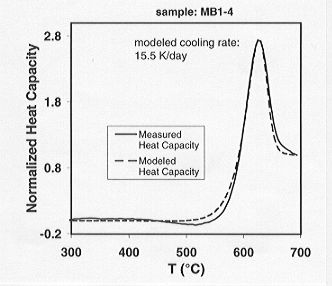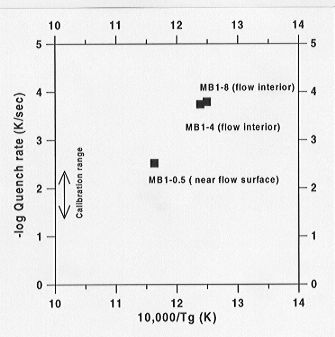

Tenerife, the largest volcanic island of the Canary archipelago, reveals a volcanic history ranging from the early mafic submarine stages to the subaerial eruption of highly evolved undersaturated material. Associated with the build-up of the island was a series of caldera collapses within the central volcanic complex. The youngest expressions of the volcanic activity are the two >3000 m stratovolcanoes Teide and Pico Viejo that form the central edifice of the island. Episodic eruptions from both volcanoes exhibit a bimodal volcanism with the generation of phonolites towards the end of the activity into historic times.
The 2020 B.P. volcanic event of Montaña Blanca, a satellite vent of the Pico Viejo - Teide volcanic system, produced a subplinian peralkaline phonolitic eruption, associated with the generation of lava flows and pumices. During a period of fire-fountaining along an eruptive fissure the ejected clasts formed a densely welded glassy spatter agglutinate, that remobilised at steeper slopes and mantled the preexisting pumices. The welded horizons exhibit an obsidian that is lava-like in appearance. Yet individual spatters are clearly visible, predominantly towards the contact to the underlying pumices and as surface features within ultra-proximal vent locations.
A central issue of this subplinian activity concerns the differences in cooling patterns and cooling dynamics involved. The pumices pile up to >3 m thickness yet they do not reveal any indication of welding, whereas the clastogenic lavas are densely welded. These kinetic differences can be primarily attributed to different thermal histories of the individual clasts.
To determine cooling dynamics involved in the generation of the two different members of the eruption, we apply relaxational geospeedometry using differential scanning calorimetry (DSC). This method is based on the quantification of the relaxation process of enthalpy within the glass transition interval during the reheating of the glassy sample. This relaxation process is dependent on the previously applied cooling rate of the glass. Here it is the cooling rate of the obsidian in nature.
The specific heat capacities of the samples are measured during a "reheating
and cooling" thermal procedure at matched heating and cooling rates of
20, 16, 10, 8 and 5 K/min. With the aid of this procedure a sample-specific
four-parameter model can be calibrated on the basis of the known thermal
histories of the thermal treatment. Individual adjustment of the parameters
and a  ² test routine enable us to quantify
the natural cooling rate of the glassy sample (Fig. 3.7-10). Preliminary
results of a proximal vertical section within the rheomorphic layer reveal
an order of magnitude difference of cooling rates from the surface near
parts of the section towards the interior of the flow (Fig. 3.7-11).
² test routine enable us to quantify
the natural cooling rate of the glassy sample (Fig. 3.7-10). Preliminary
results of a proximal vertical section within the rheomorphic layer reveal
an order of magnitude difference of cooling rates from the surface near
parts of the section towards the interior of the flow (Fig. 3.7-11).
 |
|
|
Fig. 3.7-10: The heat capacity for sample MB1-4 produced on
first reheating. The heat capacity curve in the glass transition interval
is dependent on the previous applied cooling rate (natural volcanic cooling
rate). The trace is normalized due to the temperature dependence of both
the glass and the supercooled liquid field. The modeled heat capacity trace
results from a four-parameter numerical analysis and reflects a modelled
cooling rate of 15.5 K/day.
|
|
 |
Fig. 3.7-11:
Preliminary results of cooling rate determinations for a welded clastogenic obsidian flow. Samples MB1 were taken from a proximal flow sequence. Sample 0.5 stems from a near surface part of the flow, samples 4 and 8 from the dense interior at 4 and 8 cm depth. The difference in quench rates between the surface and the interior parts is more than one order of magnitude. |
Work in progress is focussed on a detailed evaluation of the cooling patterns in combination with viscosity measurements to assess the rheological behaviour of such clastogenic flows. This entails the study of welding and secondary vesiculation processes that occur in various intensities throughout the 2020 years B. P. eruption of Montaña Blanca.

Tel: +49-(0) 921 55 3700 / 3766, Fax: +49-(0) 921 55 3769, E-mail: bayerisches.geoinstitut(at)uni-bayreuth.de
 Previous page
Previous page